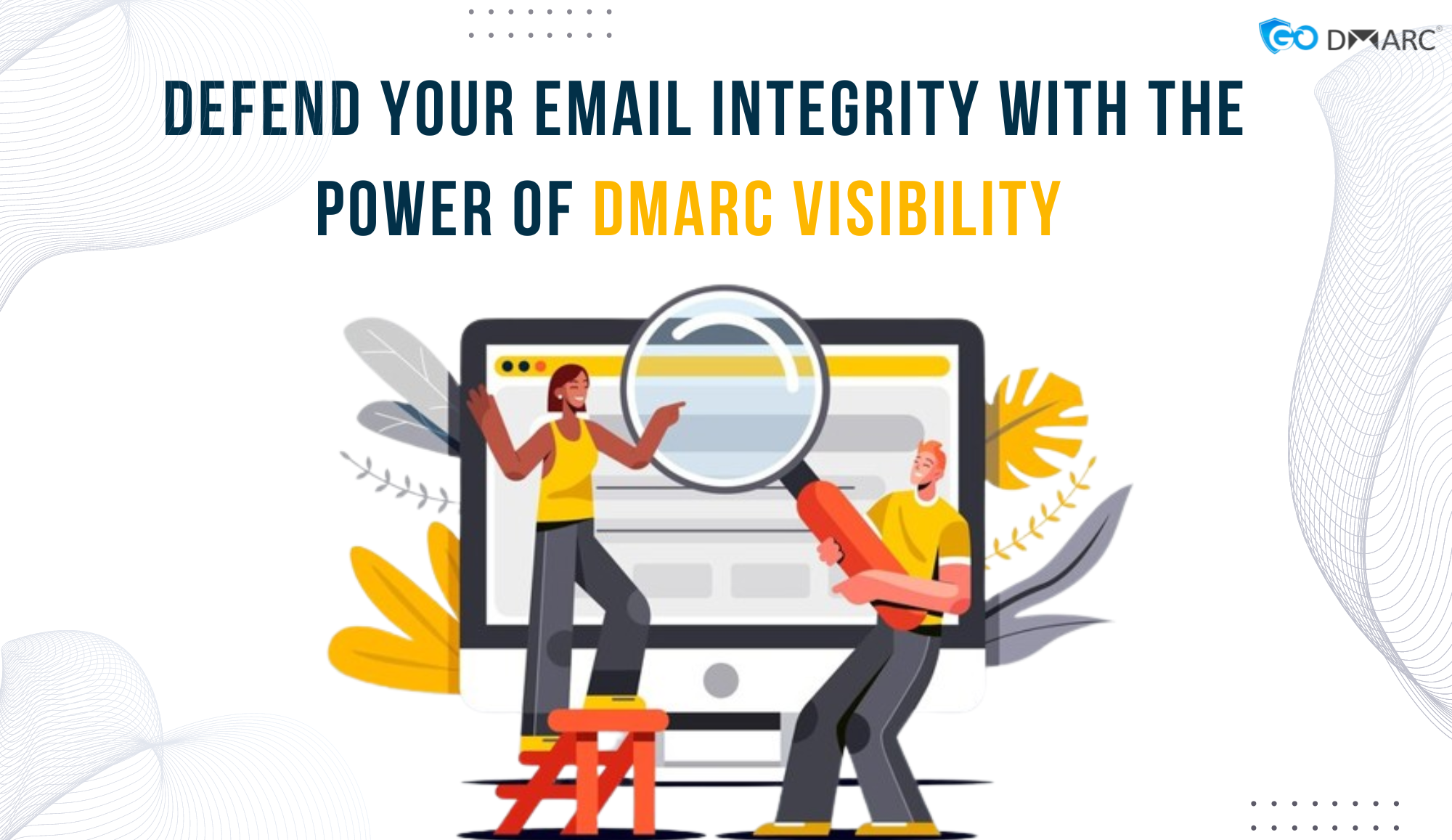Emails are still a huge part of how businesses communicate, but not all emails are what they seem. Hackers can pretend to be from your company and send fake emails to trick people. This can be a big problem!
Implementing robust measures becomes essential as organizations strive to safeguard their email integrity. One of the most effective strategies is leveraging the power of DMARC (Domain-based Message Authentication, Reporting, and Conformance) visibility.
What is DMARC?
DMARC is an email authentication protocol specifically designed to allow domain owners to protect their domain from unauthorized use, commonly known as email spoofing. By using GoDMARC, domain owners can specify which mechanisms (SPF and DKIM) are employed when sending emails and how to handle emails that fail these checks. This ensures that only legitimate emails are delivered, significantly reducing the risk of phishing and other fraudulent activities.
What is the Importance of DMARC Policy?
Implementing a DMARC policy is crucial for any organization looking to secure its email communications. A DMARC policy dictates how your email server should handle messages that fail authentication checks.
There are three DMARC policy options:
None: Monitors email traffic and provide reports without affecting email delivery.
Quarantine: Marks emails that fail DMARC checks as suspicious and directs them to the spam folder.
Reject: Blocks emails that fail DMARC checks from being delivered.
Choosing the right DMARC policy depends on your organisation’s needs and readiness to enforce strict email authentication measures.
Enhancing DMARC Visibility with GoDMARC
DMARC visibility refers to the ability to monitor and analyze email authentication results and gain insights into who is sending emails on behalf of your domain. This is achieved through DMARC reports, which provide detailed information about email sources and their authentication status.
Setting Up DMARC Reporting: Configure your DMARC record to generate aggregate and forensic reports. These reports offer valuable insights into your email traffic and authentication outcomes.
Analyzing DMARC Reports: Regularly review DMARC reports to identify legitimate email sources and detect unauthorized ones. Tools and services specializing in DMARC reporting can simplify this process by providing comprehensive analysis and actionable insights.
Adjusting DMARC Policies: Based on the findings from DMARC reports, fine-tune your DMARC policy to progressively move from monitoring to enforcement. Start with a “none” policy, analyze the reports, and gradually shift to “quarantine” and “reject” policies.
Benefits of GoDMARC Dashboard Visibility
1. Spot Spoofing From Miles Away:
Traditional spam filters often miss cleverly crafted spoofing attempts. DMARC actively verifies the sender’s identity by aligning the “From” address with your domain’s authentication records. Any mismatch triggers an alert, allowing you to identify and shut down spoofing attempts before they reach your recipients.
2. Customized Shields for Your Domain:
DMARC empowers you to define how email servers should handle unauthenticated emails claiming to be from your domain.
You can choose to have them:
Quarantined: This isolates suspicious emails for further investigation, preventing them from reaching inboxes but allowing for potential legitimate senders to be whitelisted.
Rejected: This completely blocks unauthorized emails, offering the strongest protection against spoofing but requiring careful configuration to avoid hindering legitimate communications.
3. Real-Time Alerts:
DMARC provides near-instantaneous notifications whenever unauthorized emails are sent from your domain. This allows you to react swiftly to potential security breaches and take corrective measures to contain the threat before it escalates.
4. Look-A-Like Domain Alerts:
Hackers often use domains that closely resemble your company’s name (e.g., [invalid URL removed] instead of subscribe.com). DMARC monitors for emails originating from these look-alike domains, alerting you to potential phishing attempts that might bypass traditional filters.
5. IP Threat Intelligence:
DMARC integrates with threat intelligence databases, providing valuable insights into the sender’s IP address reputation. This helps identify emails originating from known malicious sources, further bolstering your email security posture.
By leveraging these features in conjunction with DMARC’s core spoofing prevention capabilities, you can create a comprehensive defense system that safeguards your organization’s email integrity and protects your brand reputation.
Conclusion
GoDMARC provides the best DMARC dashboard which not only protects your organization from email spoofing and phishing attacks but also enhances your brand’s reputation and trustworthiness. By implementing a robust DMARC policy, you can ensure your email communications remain secure and reliable.




